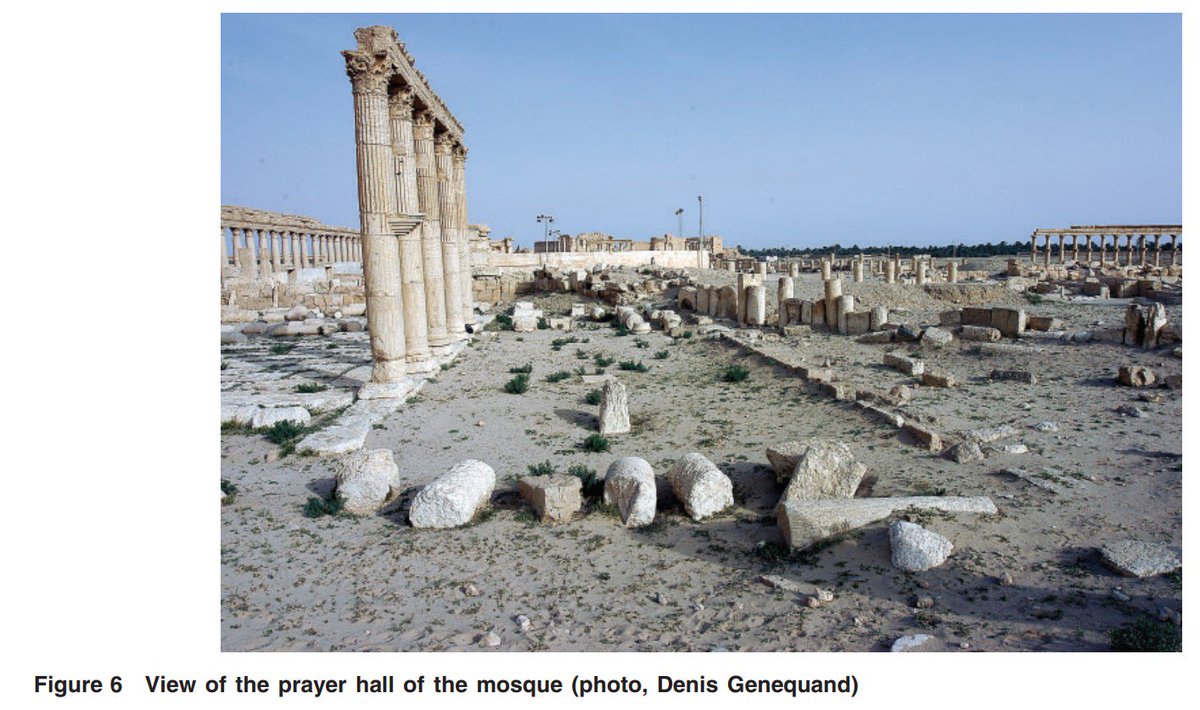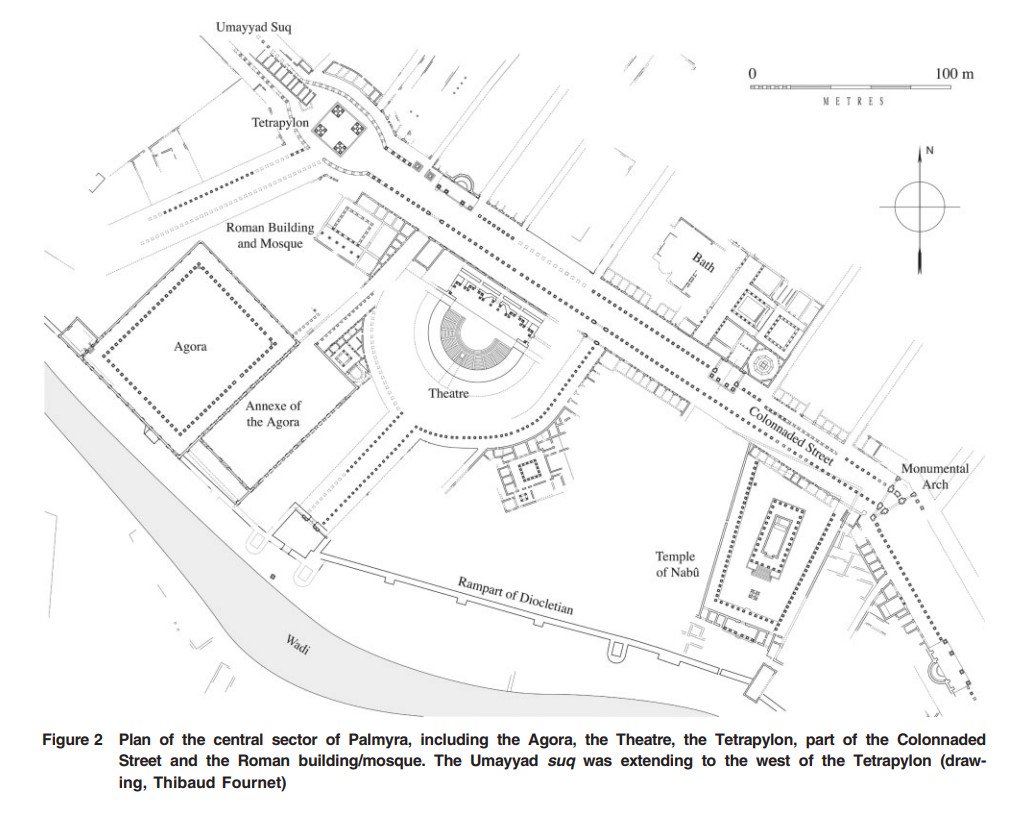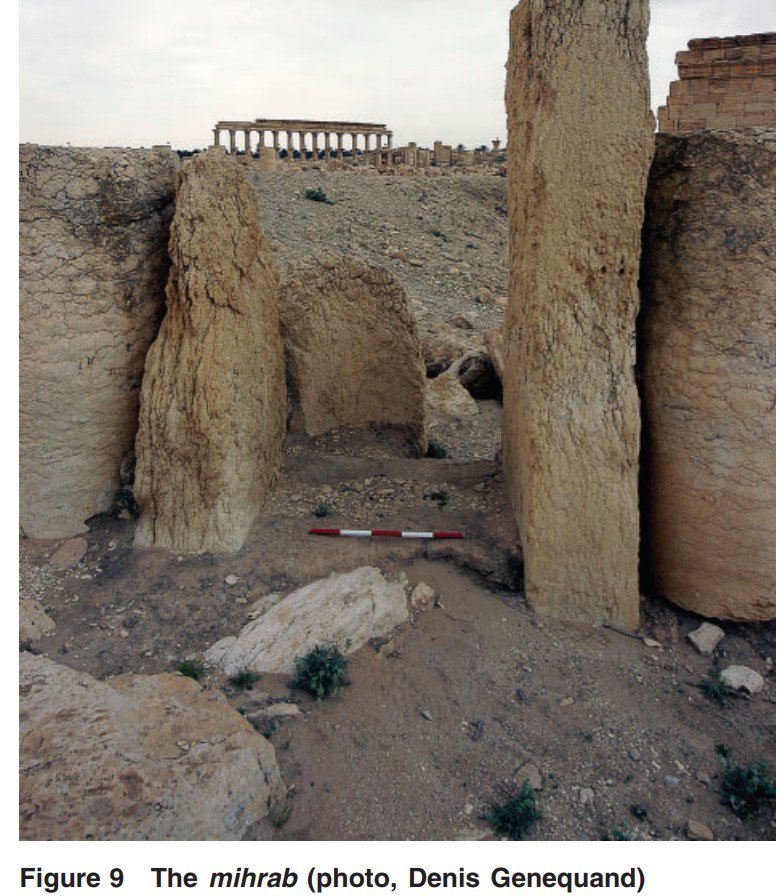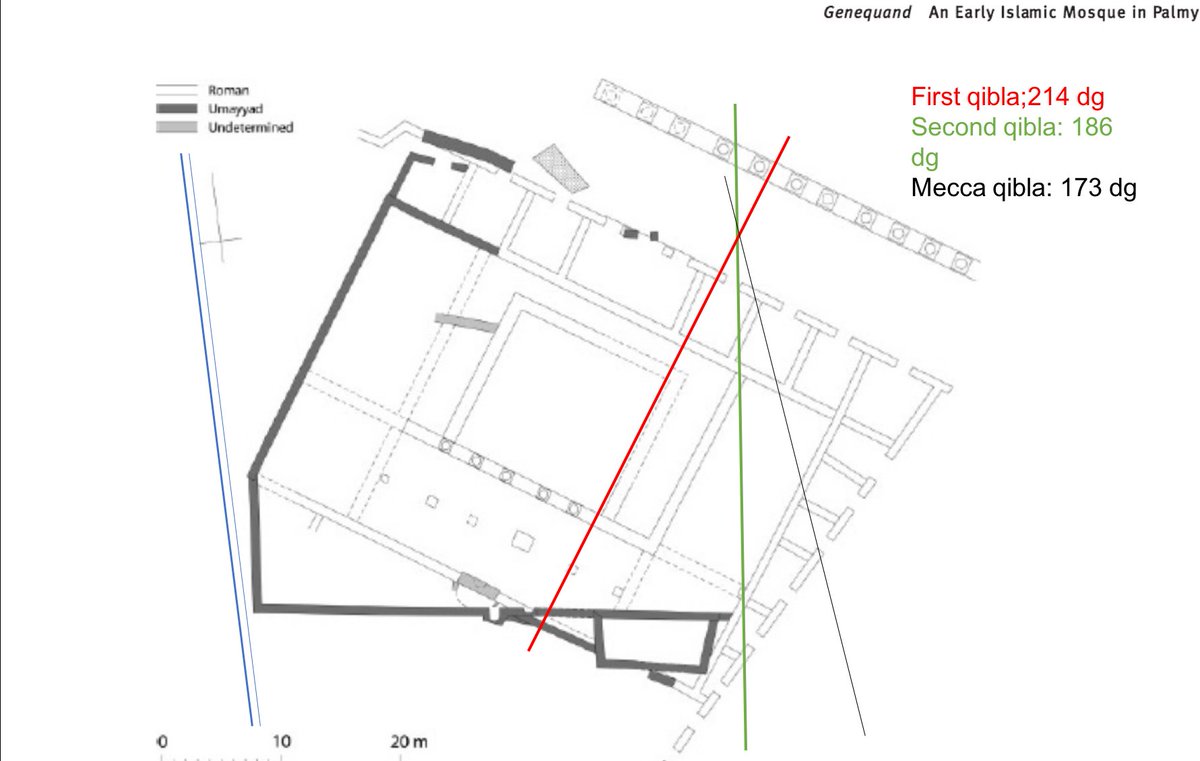Last week we talked about Jewish and Allat-Athena cultic evidence in the Late Antique Syrian city of Palmyra.
But what about Palmyrene archeology of the early Islamic period?
Let& #39;s have a look.
But what about Palmyrene archeology of the early Islamic period?
Let& #39;s have a look.
Palmyra was continually inhabited from the Classical Roman era through the Christian era (Palmyra was still a bishopric in the 9th C) and deep into the Islamic era (approx. 1400 CE). Some sources claim Palmyra was captured by general Khalid b Al-Walid as early as 634 CE.
Archeologists Genequand and his team excavated an early Umayyad mosque close to the city& #39;s suq (market). The mosque was built atop a Roman structure. The first qibla wall, aligned with the Roman foundation, was later rebuilt with a different qibla orientation to the south.
The mosque was rather large, with an outside width of 41 meters. The plan consisted of a hypostyle hall and a courtyard, a common layout for congregational Umayyad mosques.
Genequand asserts that the second qibla was built in alignment with Mecca. However, measuring the directions reveals that neither the first nor the second qibla fit the direction of Mecca (wrong quadrant).
The first qibla possibly pointed to Mount Harroun or Mount Sinai. Both are Biblical locations associated with Qur& #39;anic prophets (Harroun and Moses respectively).
The Marwanids, a branch of Umayyad dynasty that wrested control in 684 CE, imposed a large-scale urban refurbishment of Palmyra. Only a strong political power was able to impose significant updates to the city& #39;s central mosque, like the changes seen in this qibla wall.
The above archeological information has taken from: https://www.academia.edu/8394179/ ">https://www.academia.edu/8394179/&...

 Read on Twitter
Read on Twitter






